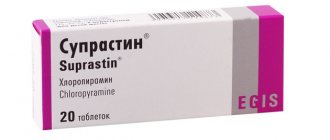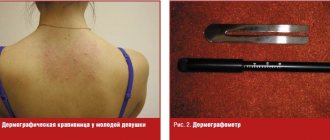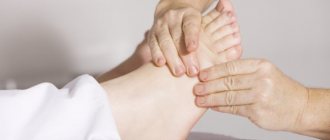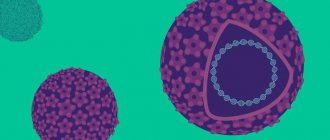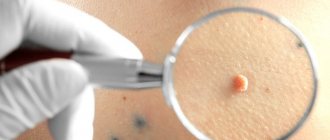The incubation period for scabies is from 1 to 6 weeks, during which the parasites select and develop a “territory.” The immune system instantly reacts to their appearance and the emerging “waste”. The duration of the incubation period depends on the number of mites that have fallen on a person’s skin: the more there are, the faster the main symptom of scabies will appear - itching. The intensity and nature of skin rashes is not affected by the number of mites; the allergic reaction depends on the interaction of the human immune system and the waste products of the parasites. A sick person, constantly and vigorously scratching the bite sites, involuntarily introduces an infection, for example, staphylococcal; in this case, the bacteria “add” their own symptoms of the disease, giving the rash a pustular character.
Causes of itching
The content of the article
Sarcoptes scabiei are arthropods that live on the skin of mammals. Most often, areas of the skin that do not contain a large number of sebaceous glands are affected, since sebum prevents the proliferation of parasites. In addition to humans, it can infect other mammals - dogs, cats, wild boars, monkeys, koalas and others.
It is smaller than 0.5 mm, so is barely visible to the naked eye and has no eyes. The female drills corridors in the superficial layers of the skin, in which she lays 20-30 eggs. Then, after a few days (usually 3 to 10), young mites (larvae) hatch, crawl on the skin, develop into nymphs, and then into the adult form.
After the adult parasites emerge, the males die and the females lay new eggs. The infection causes severe itching, likely due to an allergic reaction to the mites.
General notes on therapy
Treatment for scabies is divided depending on the goal pursued by the doctor. There are three types of therapy:
- specific;
- preventive;
- trial (ex juvantibus).
Specific treatment is carried out if the patient has scabies, the diagnosis of which is confirmed clinically and laboratory by detecting the pathogen.
Preventive treatment is carried out according to epidemiological indications in areas of scabies for persons who do not have clinical manifestations of the disease.
Family members (parents, children, grandparents, other relatives), as well as nannies, governesses, caregivers;
- in the presence of conditions for transmission of the pathogen (close bodily contact, sexual contact, staying in bed together in the evening and at night, etc.);
- in the presence of children of a younger age group with scabies, with whom most family members usually come into contact;
- when two or more patients are identified in the focus (irradiating focus).
Members of infection contact teams:
- persons who have shared bedrooms, in the presence of close bodily contact with a person with scabies;
- all members of groups/classes/divisions where several cases of scabies have been registered or new patients are identified in the process of monitoring the outbreak.
Trial treatment (ex juvantibus) is carried out only in cases where the doctor, based on clinical data, suspects the presence of scabies, but the diagnosis is not confirmed by the detection of the pathogen. If the use of scabicides has a positive effect, a case of scabies is registered.
The principles of therapy must be followed by the physician regardless of the scabicide chosen for the treatment of scabies:
- simultaneous treatment of all patients identified in the outbreak to prevent reinvasion;
- application of anti-scabies in the evening to increase the effectiveness of therapy, which is associated with the nocturnal activity of the pathogen;
- application of anti-scabies drugs approved for use in children under 3 years of age to the entire skin; in other patients, the exception is the face and scalp;
- applying scabicides with bare hands, and not with a napkin or swab; the preparations are especially carefully rubbed into the skin of the palms and soles;
- if after applying the drug there is a need to wash your hands, then they must be re-treated with scabicide;
- Carrying out washing before the first application of scabicide and after completion of treatment; change of underwear and bed linen - after the course of therapy;
- exposure of the drug on the skin should be at least 12 hours, including the entire night period, it can be washed off in the morning;
- treating complications simultaneously with the treatment of scabies;
- persistent scabious lymphoplasia of the skin is not an indication for continued specific therapy;
- in the presence of post-scabiosis itching, the issue of re-treatment with scabicide is decided on an individual basis after a thorough examination of the patient;
- After completion of therapy, it is necessary to disinfest underwear and bed linen, towels, clothes and shoes, and carry out wet cleaning in the room where the patient was.
Indications for hospitalization
- patients with mental, neurological or other diseases in which the patient, in the absence of a person caring for him, cannot independently completely fulfill all the necessary prescriptions;
- patients from organized groups in the absence of the possibility of isolating them from healthy individuals (for example, if people living in boarding schools, orphanages, etc. have scabies).
- An indication for referral to a hospital may also be scabies complicated by secondary pyoderma with multiple, often deep pustules (boils, carbuncles, ecthymas), especially in children, as well as scabies accompanied by lymphadenopathy, high fever, etc.
If scabies is detected in a patient in the somatic department, transfer to a specialized dermatovenerological hospital is not required. Treatment is carried out in the department where the patient is due to the underlying disease. The patient becomes infective after the first scabicide treatment. With a common process, Norwegian scabies and scabious erythroderma, temporary isolation of the patient in a separate room is necessary for the duration of treatment of scabies (4 days). In these cases, all patients who are in the same room with a patient with scabies are subject to preventive treatment.
A patient with scabies entering for treatment from the emergency department (or identified in the department) is isolated in a separate room (isolator). After consultation with a dermatovenerologist and confirmation of the diagnosis, the patient (adults and children over 1 year old) is treated and given personal items (towel, washcloth, soap in small packages). Meals are served in the ward. The patient's underwear and bed linen are processed.
Manipulations regarding patients with scabies, as well as cleaning of premises, are carried out using personal protective equipment - rubber gloves, separate gowns. Rubber gloves and cleaning equipment are disinfected after cleaning.
Treatment regimens
- Benzyl benzoate
emulsion and ointment are preparations based on benzyl ester of benzoic acid. For children aged 3 to 7 years, a 10% emulsion and ointment is used, for people in older age groups - a 20% emulsion and benzyl benzoate ointment. Before starting treatment, the patient is advised to wash with soap. The emulsion is shaken before use. The drugs are applied to the skin twice - on the 1st and 4th days of treatment. After 12 hours of exposure to the skin, the drug can be washed off. Underwear and bed linen are changed on the 5th day. When applied to the skin, a burning sensation often occurs, which goes away after a few minutes, about which the patient should be warned. Avoid contact of benzyl benzoate with mucous membranes. Benzyl benzoate is contraindicated in pregnant women and children under 3 years of age. - Permethrin
5% emulsion concentrate in ethanol. An aqueous 0.4% emulsion is prepared ex tempore by diluting 8 ml of 5% permethrin emulsion concentrate with water at room temperature to a volume of 100 ml. Rubbing the drug is carried out once a day at night for 3 days in a row or on the 1st and 4th days of the course. Not recommended for lactation, children under 1 year of age, elderly people with insufficient liver or kidney function. - Sulfur ointment
is a preparation based on precipitated sulfur (33% sulfur) (sulfur praecipitatum). Sulfur ointment is applied to the skin after washing with soap once a day at night for 5–7 days. The drug is thoroughly rubbed into the skin of the hands, then the torso and legs, including the soles and fingers. Not recommended for use during pregnancy and for children under 3 years of age. - Piperonyl butoxide + esbiol
aerosol for external use. After washing the patient, the drug is sprayed at a distance of 20–30 cm from the skin. Skin treatment is carried out starting from the upper part of the body. For children, the drug is applied to the face with a cotton swab moistened with the drug. After 12 hours, the patient washes and changes bed and underwear. For scabies without burrows and no complications, a single treatment is carried out; for complicated scabies, the treatment is repeated after 3–5 days. Avoid contact of the drug with mucous membranes. The method is recommended for the treatment of scabies associated with atopic dermatitis.
Treatment of pregnant women.
To treat scabies in pregnant women, use with caution an aerosol for external use, piperonyl butoxide + esbiol, and a permethrin solution prepared from a 5% emulsion concentrate in ethanol.
Treatment of children
For the treatment of children under 1 year of age, an aerosol for external use, piperonyl butoxide + esbiol, is used; for the treatment of children aged 1 to 3 years – aerosol for external use piperonyl butoxide + esbiol and 5% permethrin emulsion concentrate in ethanol; for the treatment of children aged 3 to 7 years - 10% emulsion and benzyl benzoate ointment, 5% sulfur ointment are added to the indicated agents; Therapy for children over 7 years of age is carried out according to treatment regimens for adults.
Treatment of scabious skin lymphoplasia
After a full course of any scabicide, the mites die. It is resolved much faster if, before starting specific therapy, the epidermis from the surface of the papules is scraped with a sterile scalpel until droplets of blood appear. The skin defect is treated with antiseptic drugs (aniline dyes, 5% potassium permanganate solution, povidone-iodine solution, chlorhexidine digluconate, etc.).
Specific treatment with scabicides (in the evening) is combined with rubbing topical combined glucocorticosteroid drugs into the papules (morning and afternoon): diflucortalone + isoconazole, betamethasone + gentamicin + clotrimazole, hydrocortisone + neomycin + natamycin, clioquinol + flumethasone, etc.
If, after resolution of the main clinical manifestations of scabies, scabious lymphoplasia is observed, treatment is continued with single-component topical corticosteroids under an occlusive dressing: methylprednisolone aceponate, hydrocortisone butyrate, mometasone furoate, etc. You can use phono- or photophoresis with these drugs, except in cases where the rash is localized to the genitals organs Superficial cryodestruction of lesions is also used, followed by the application of topical combined glucocorticosteroid drugs.
Treatment of scabies complicated by secondary pyoderma
Treatment begins with rubbing in a scabicide to eliminate itching, which contributes to the violation of the integrity of the skin. Preference is given to scabicides, the application of which does not require intensive rubbing and does not contribute to the spread of infection through the skin (aerosol for external use piperonyl butoxide + esbiol and a permethrin solution prepared from a 5% emulsion concentrate in ethanol). The scabicide is rubbed in on the 1st and 4th days of the course, while pyoderma is treated on the 2nd and 3rd days. The question of washing the patient before rubbing in the scabicide is decided by the doctor individually, taking into account the possibility of dissemination of the infection.
For superficial pyoderma (impetigo, ostiofolliculitis, tourniol, etc.), external therapy is used. Pustules are extinguished with solutions of aniline dyes, a 5% solution of potassium permanganate, a solution of povidone-iodine and other antiseptic drugs. If impetigo is present, its cover is pierced with a sterile needle. After the pustules dry, ointments/creams with an antibacterial effect are prescribed: bacitracin + neomycin, mupirocin, fusidic acid; with antiseptics: povidone-iodine, silver sulfathiazole, chlorhexidine bigluconate, etc.; combination drugs: dioxomethyltetrahydropyrimidine + chloramphenicol, etc. Topical combined glucocorticosteroid drugs are indicated: hydrocortisone + neomycin + natamycin, hydrocortisone + fusidic acid, betamethasone + gentamicin + clotrimazole, clioquinol + flumethasone, etc. For deep forms of pyoderma (ecthyma vulgaris, deep follies culitis, boils ) treatment is supplemented by the prescription of systemic broad-spectrum antibacterial drugs.
Treatment of scabies complicated by allergic dermatitis
Before starting specific therapy, it is advisable to recommend that the patient wash with soap to improve access of the anti-scabies drug into the passages. Treatment begins with rubbing in a scabicide to eliminate the activity of the scabies mite, which produces allergens. Preference is given to scabicides, the application of which does not require intensive rubbing and does not contribute to the spread of infection through the skin (aerosol for external use piperonyl butoxide + esbiol and a permethrin solution prepared from a 5% emulsion concentrate in ethanol). The scabicide is rubbed in on the 1st and 4th days of the course, and on the 2nd and 3rd days allergic dermatitis is treated.
With a limited process, only local therapy is advisable. For this purpose, combined topical glucocorticosteroid drugs are used, for example, flucortalone + isoconazole, betamethasone + gentamicin + clotrimazole, hydrocortisone + neomycin + natamycin, clioquinol + flumethasone, etc.
In case of widespread allergic dermatitis, it is necessary to prescribe antihistamines by mouth (levocyterizine, chloropyramine hydrochloride, clemastine, cetirizine, desloratadine, etc.). In this case, external therapy begins with an aqueous shaken mixture, cindol and other indifferent agents, including products for the care of dry irritated skin. After the transformation of the widespread process into a local one, treatment can be continued with single-component topical glucocorticosteroid drugs: methylprednisolone aceponate, hydrocortisone butyrate, mometasone furoate.
Treatment of scabies complicated by microbial eczema
Considering that microbial eczema most often develops in areas of the skin where scabious lymphoplaia is localized, its treatment includes three stages:
- treatment of scabies with one of the scabicides;
- treatment of microbial eczema according to the generally accepted scheme, after resolution of infiltration and removal of crusts, lenticular papules, often multiple, usually remain in its place;
- treatment of scabious lymphoplasia according to the scheme indicated above.
Treatment of Norwegian scabies
Has specific features. In the evening, the patient is treated with a scabicide to destroy the active stages of the pathogen and reduce the patient’s contagiousness, in the morning - with one of the keratolytic drugs - products with salicylic acid (5% sulfur-salicylic ointment, 5-10% salicylic ointment) and urea. This treatment is carried out until the crusts are completely removed. Next, the patient is treated in the evening only with scabicide for 2–3 days.
After completing specific therapy, emollients or moisturizers are used to eliminate dry skin. An important condition is regular examination of scrapings of the epidermis to identify scabies mites. If mobile individuals are detected, the course of specific therapy is repeated with a change of scabicide.
Treatment of scabious erythroderma
It is carried out in the same way as Norwegian scabies, but without the use of keratolytic agents.
Postscabiosis itching
Persistence of itching in patients after complete specific therapy with one of the scabicides. The main objective clinical symptom is the presence of scabies, the length of which reaches several centimeters. The absence of holes in the roof of such passages makes it difficult for the scabicide to penetrate them. The duration of itching corresponds to the life expectancy of females and depends on their age at the time of initiation of therapy. If itching persists during treatment with antihistamines and topical glucocorticosteroids for a week (the time required to exfoliate the epidermis with dead mites), re-treatment with scabicide is necessary, carried out after thoroughly washing the patient with soap and a washcloth. Another cause of itching may be dry skin. In this case, emollients are prescribed.
Treatment of scabies in the hot season
Preference is given to drugs in liquid dosage form (aerosol for external use piperonyl butoxide + esbiol and permethrin solution prepared from a 5% emulsion concentrate in ethanol), which does not require intensive rubbing. Using the ointment at high air temperatures can lead to overheating of the patient, dermatitis or the appearance of pyoderma.
Observation period
The duration of observation of patients is individual and depends on its clinical form. For scabies without passages, typical scabies, or “incognito” scabies, after a full course of therapy and a full range of preventive measures in the outbreak, the observation period for patients is 2 weeks.
The duration of clinical observation increases for scabies complicated by pyoderma, dermatitis, microbial eczema, scabious lymphoplasia of the skin, scabious erythroderma and Norwegian scabies. The patient is removed from the register after complete resolution of all clinical manifestations. The prognosis for scabies is favorable.
Reasons for treatment failure
- Non-compliance with treatment regimens:
- use of drugs in low concentrations;
- non-compliance with frequency and processing time;
- applying the drug without taking into account the daily rhythm of scabies mite activity;
- partial treatment of the skin;
- use of scabicides that have expired.
Drug complications from scabicides, manifested by itching and dermatitis, are often mistakenly regarded as persistence of scabies.
Transmission of scabies
The most common source of infection is a person at the end of incubation who does not yet have significant disease, or a patient with obvious signs of disease.
Itching is transmitted from one person to another:
- with direct skin-to-skin contact;
- through sexual intercourse;
- through clothes, towels and bed linen;
- when swimming in pools.
The disease occurs more often in colder seasons. Regular personal hygiene does not prevent infection through contact with an infected person.
The scientific journal Clinical Infectious Diseases cites research confirming the frequency of skin rashes caused by scabies. They are transmitted from person to person, but are not widespread among the population. Fortunately, they can be successfully treated with topical treatments (such as Lindane and permethrin).
Treatment
Primary treatment of infected individuals includes the use of topical scabicides such as 5% permethrin, 0.5% water-based malathion, 10-25% benzyl benzoate emulsion, or 5-10% sulfur ointment. Oral ivermectin is also highly effective and is approved in several countries. The safety of ivermectin in pregnant women or children weighing less than 15 kg has not been established and ivermectin should not be used in these populations until further safety data are available. If treatment is effective, itching usually worsens within 1-2 weeks and persons undergoing treatment should be advised of this.
Given that there may be no symptoms in the early stages of a new infestation, and since anti-scabies medications do not kill the eggs of the parasite, the best results are achieved by treating all family members at the same time and repeating treatment at a time consistent with the medication chosen.
Classic form of itching
The classic form is much more common and is characterized by the following changes:
- severe itching of the skin, worse at night and in hot weather, while during the day the symptoms are milder;
- the appearance of small channels (a grayish-black line on the skin) - most often between the fingers, wrist, forearms, armpits, on the lower abdomen, inner thighs, on the chest around the nipples, genitals, lower part of the buttocks with a small papule at the end or vesicle ( bubble);
- the appearance of dark spots (such as rashes) on the skin;
- the head, face, neck, palms and soles may be affected in children, but this is not common in adults;
- secondary bacterial infections caused by scratching the skin.
WHO activities
WHO works with Member States and partners to develop scabies control strategies and outbreak response plans. WHO recognizes that the burden of disease and the risk of long-term complications need to be better defined and that scabies control strategies need to be linked to interventions to facilitate rapid and cost-effective implementation. WHO is working to ensure that ivermectin is included in the WHO Model List of Essential Medicines at its next update. In addition, WHO is working to ensure that quality and effective medicines are available to countries that need them.
Diagnosis of scabies
The diagnosis is made on the basis of existing clinical disorders and is confirmed by evidence of the presence of the pathogen in the skin with suspicious changes. A negative result does not rule out itching because infected people usually have a small number of parasites - 10 to 15.
A person is considered contagious until treatment is completed.
In a scientific study published in The Lancet, scientist Olivier Choysdove points out: “Scabies or itch is a widespread infectious disease that has been known for many years throughout the world. It most often affects people with weakened immune systems or patients, staff in hospitals and nursing homes. It can take various specific forms, such as warts or painful scabs. Often misdiagnosed, emphasis is placed on exploring the value of new techniques that can accurately diagnose and treat this type of disease. "
A few years later, scientist Olivier Choysdove went even further in his research and published an article in the famous New England Journal of Medicine. It emphasizes the following: “Scabies can occur in atypical forms. They are more difficult to diagnose than the classic forms. and therefore it is more likely that a range of symptoms will continue to develop. Atypical itchy manifestations may occur on the face, palms or feet (especially in infants), and in the elderly. Most often in immunocompromised patients. Timely diagnosis and treatment can prevent many complications.”
Scale of the problem
Scabies is one of the most common skin diseases and accounts for a significant proportion of skin diseases in developing countries. It is estimated that more than 200 million people worldwide are infected with scabies at any given time, but more efforts are needed to more accurately estimate this burden. According to recent publications on scabies, prevalence rates range from 0.2% to 71%.
Scabies is endemic in many resource-limited tropical areas, where average prevalence rates among children are estimated to be 5–10%. Re-infections are common. The heavy burden of scabies and its complications imposes significant costs on healthcare systems. Scattered cases occur in high-income countries, but outbreaks of scabies in health care settings and vulnerable communities result in significant economic costs to national health services.
Scabies is common throughout the world, but the most vulnerable populations—young children and older adults in low-resource communities—are particularly susceptible to scabies infection and the development of secondary complications. The highest rates of infection are found in countries with hot tropical climates, especially in communities where people live in conditions of overcrowding and poverty and access to treatment is limited.
Contact your doctor or nurse if:
- 4 weeks after treatment you still have itching or rash;
- 1 week after treatment you develop a new rash, blisters or peeling skin;
- after treatment, the rash turns into a scab;
- you have one of the following signs of infection: the rash is leaking fluid;
- the site of the rash becomes painful;
- the skin feels warm to the touch;
- redness begins around the rash;
- developed a temperature of 100.4°F (38°C) or higher.
to come back to the beginning
Diagnostic measures
Diagnosis of scabies is carried out by a dermatologist, therapist or infectious disease specialist. The basis for diagnosis is clinical data and patient complaints. In some cases, scraping is prescribed and laboratory testing of the resulting biomaterial is performed. The test is not always informative due to the fact that patients take a shower before visiting the clinic.
During the examination, the doctor may heat certain areas of the skin or apply a drop of oil to them. These measures increase the motor activity of scabies mites. Dyes make it possible to detect scabies in the absence of noticeable rashes on the skin.
Questions and answers
Should relatives of a patient diagnosed with scabies undergo treatment?
The probability of infection of persons living with a scabies carrier is very high. For this reason, dermatologists often prescribe a course of preventive treatment for the patient's relatives using benzyl benzoate-based products.
Is immunity to scabies developed?
Re-infection of a person with scabies is possible immediately after completion of the current course. Because of this, doctors insist on the need for antiseptic treatment of furniture and clothing - patients do not develop immunity to scabies mites.

